Animals don’t cover their tracks.
Now that we have received a light snow, a trip around the yard reveals a remarkable range of activity that normally takes place when you are not looking.
Herein is a collection of a few tracks in the yard seen on walks yesterday morning and this morning.
The most frequently seen tracks in my yard belong to raccoons. Raccoons have a distinctive pattern whereby each side-by-side pair of prints shows one hind and one fore paw. In this picture, the hind paw, with its longer heel, is at the top, and the fore paw is at the bottom. Note the finger-like toes.

Another mammal that is omnipresent but rarely seen is the Deer Mouse. Named for the similarity of its colouring to that of the White-tailed Deer, this mouse has a sufficiently long tail that when it bounds across the snow, it leaves a tail mark. This is the short horizontal mark between the foot prints.
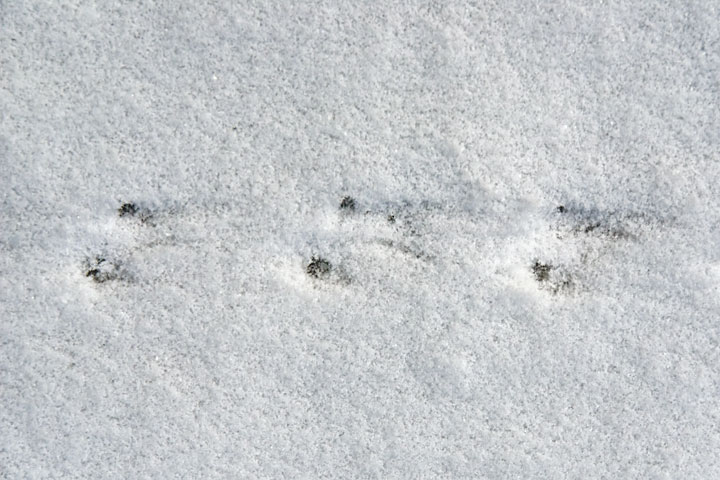
A striking thing about Deer Mice (and Voles) is that they make tunnels under the snow. These Deer Mouse tracks vanished into a snow tunnel.
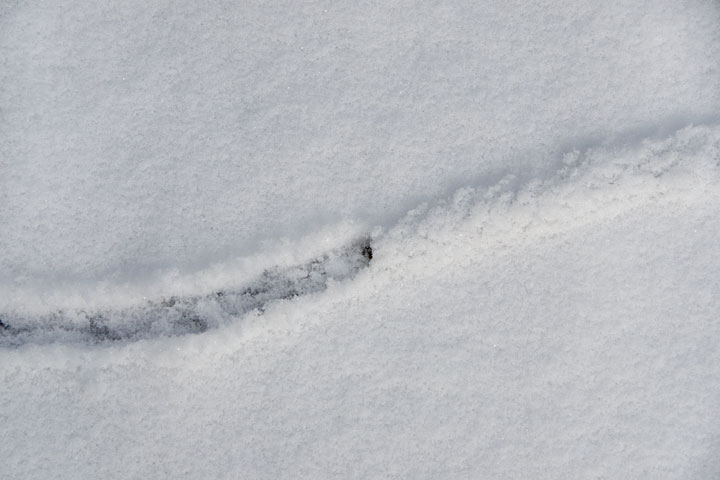
which then proceded across the landscape.

I cannot be sure that the next picture shows vole tracks rather than mouse tracks, but there is no evidence of a tail dragging and the vole has a much shorter tail than does the mouse, so these are probably the tracks of a Meadow Vole. The animal is moving from left to right. It brings its fore paws down (the inner spots) and then its hind paws arrive overshooting the fore paws.
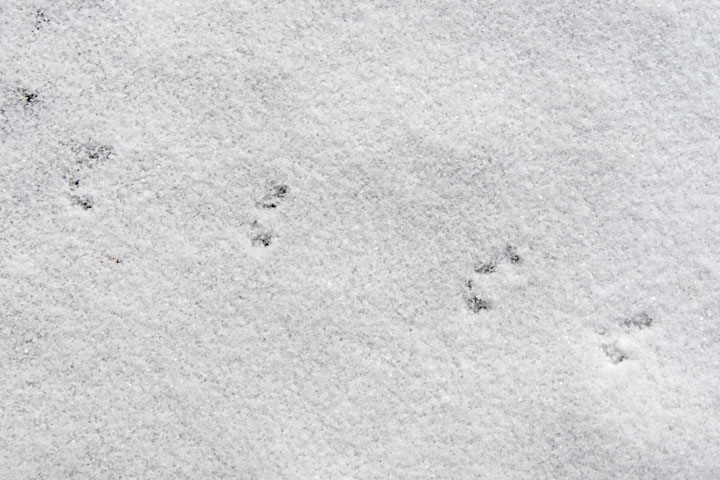
Yesterday, I went out expecting to find deer tracks everywhere; there were none. This morning, they abound. Clearly deer forage in different places on successive nights. As is typically the case, this deer left drag marks from not lifting its feet enough to fully clear the snow.

Of course, one sees birds. A staple of the region (or at least of my yard) is the Stellar’s Jay, the tracks of which are shown in this next picture.
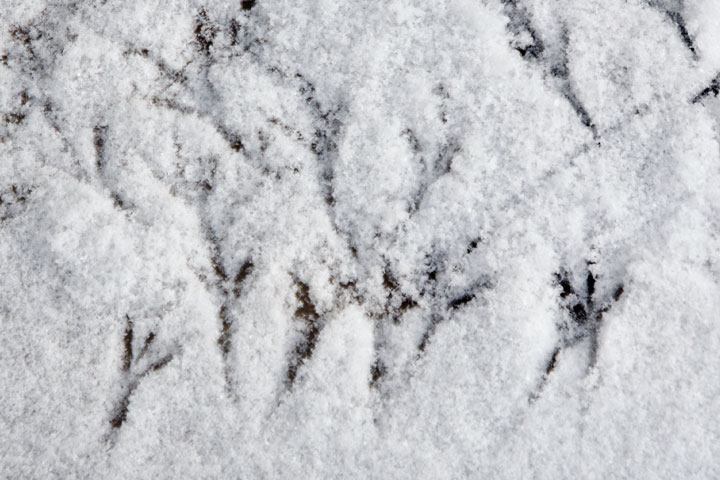
There is no avoiding goose tracks. The webbing on the feet is clear here. It is interesting that these geese pick up and lower their feet so as to leave no drag marks (unlike the mallards, below).

The mallards, like the geese, have webbed feet. Apart from the tracks being smaller, they seem to differ in another way: Mallards seem tip their feet such that their central toe or nail can drag in the snow. So, the Mallard has a long drag mark from its front central toe and a slight mark from its rear toe. This Mallard is moving from right to left. The webbed feet are evident.
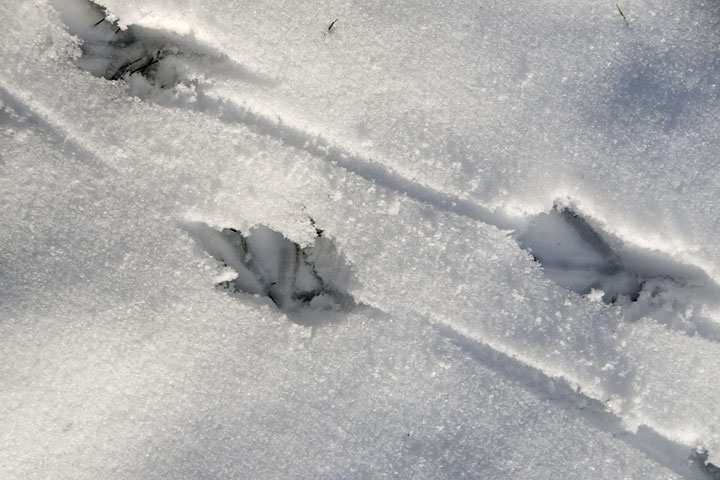
This leads one to this picture of Mallards landing and walking away. The birds flew in from the right. I suspect that it was the downstroke of their wings that produced the first mark on the left. I like Bill Baerg’s explanation of these marks (see, comments) better than what I wrote. Then there is the smudge where the birds skidded to a landing. This is followed by the two mallards walking away to the the lower left.

These are some of the things I see as I walk around my snow-covered yard.

great article, Alistair. It’s a really nice variety of tracks 🙂 I am surprised at the landing strip antics of the hard to identify Mallards; in that their foot prints look small for webbed feet in snow and not belly dragging while walking in the snow. The skids on the lower set of prints look like feet first touching down and then the belly flop, feet out, 2 steps and then belly down again for a final landing. I think the upper set shows the tail down hitting first and then belly into the snow, 2 steps and belly again for final stop. Not graceful, I’m sure but they probably get better as they get more practice landing on a fluffy, slippery surface 🙂
Bill, I think your explanation is better than mine was. Besides the wings should be up when landing and the feet down.
Nice photos, Alistair.
I I too love how the snow reveals all the action that’s happening when we’re not looking.
I recently posted some pictures of bobcat tracks through my yard at my own blog.